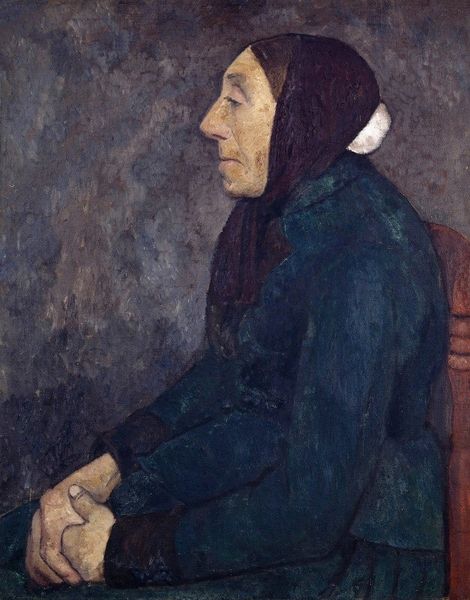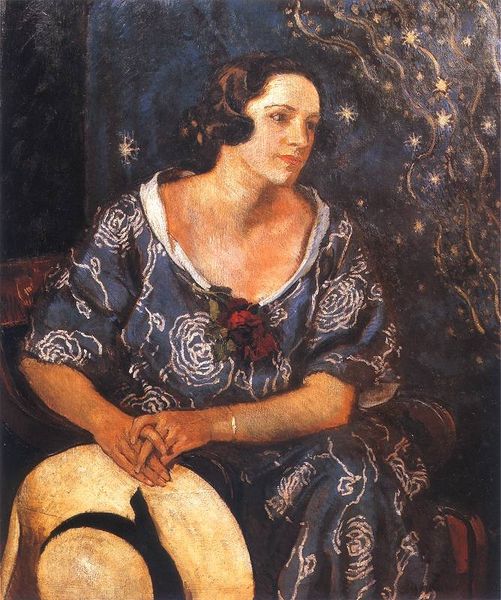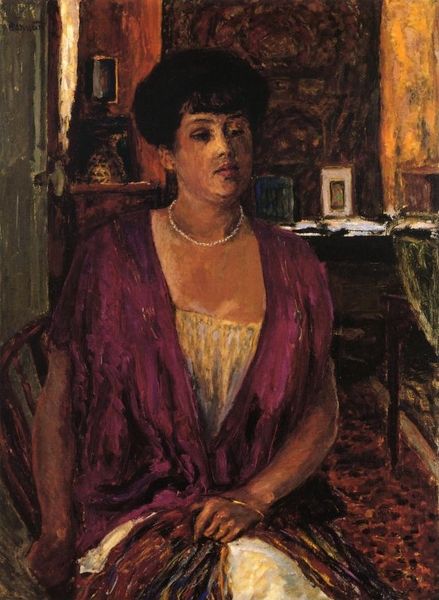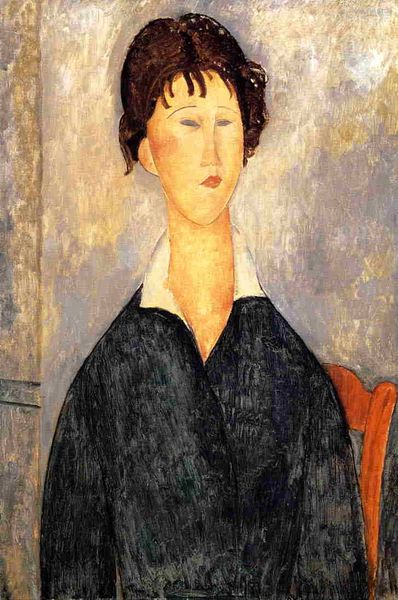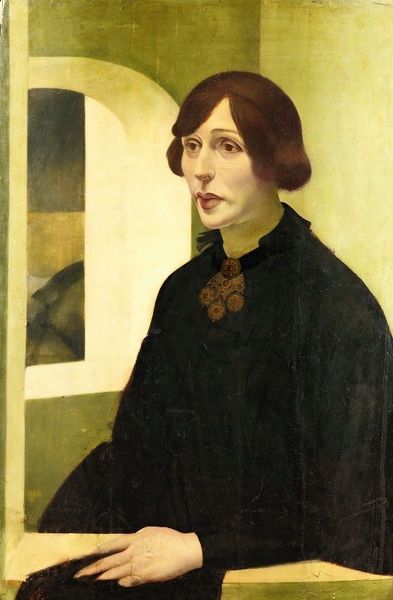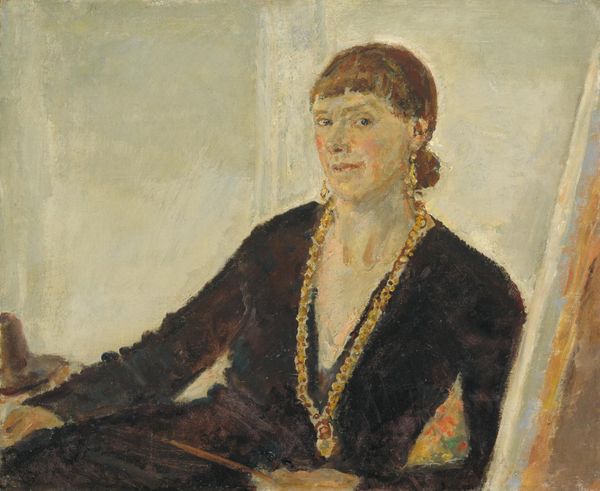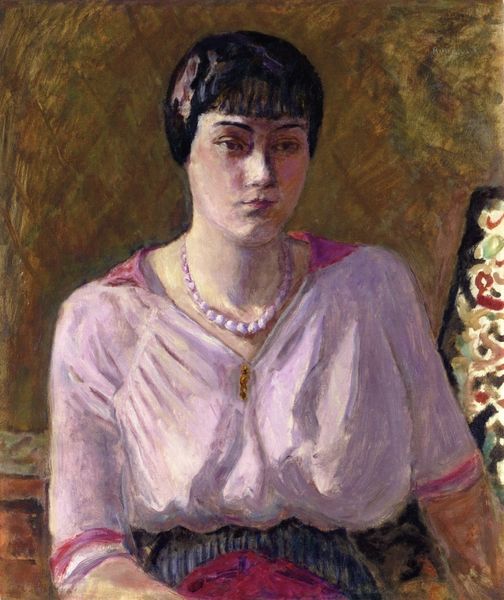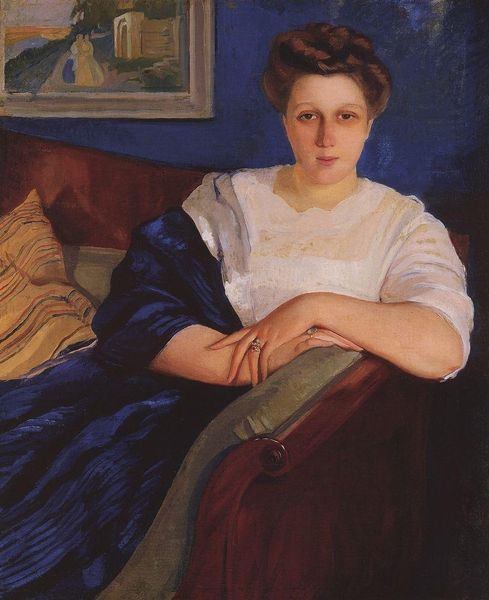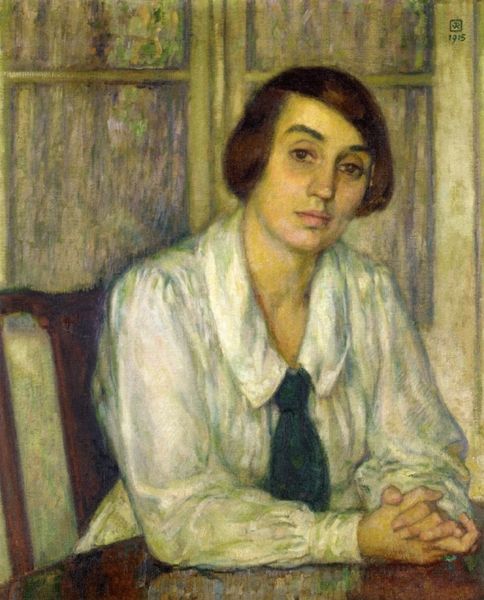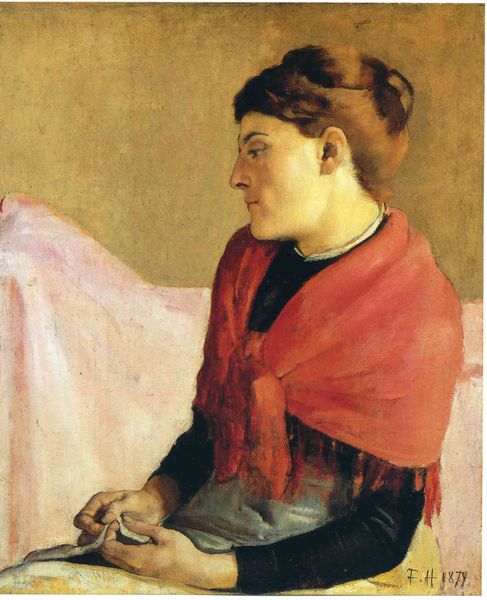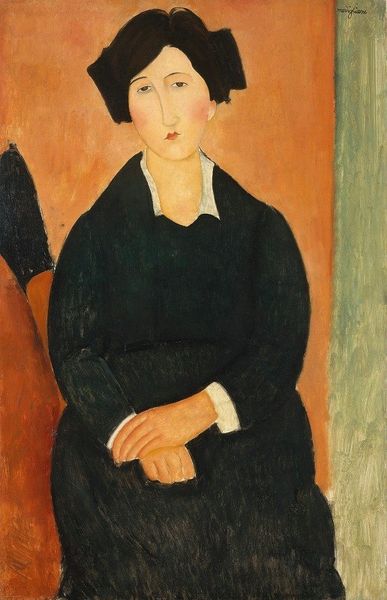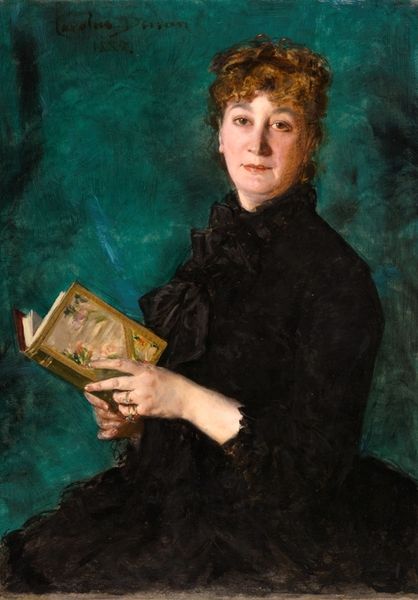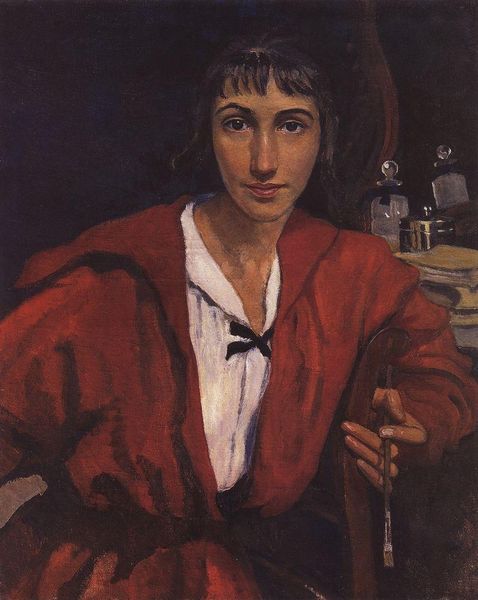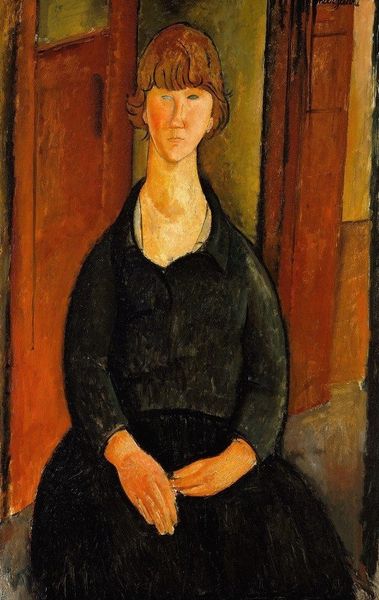
Dimensions: 92 x 73 cm
Copyright: Public domain US
Curator: Andre Derain’s "Portrait of a Woman," painted in 1913, presents a fascinating figure rendered in oil. I’m drawn to its quiet domesticity, but I also want to note its connection to the avant-garde Fauvist movement, where color and expression were primary. Editor: My first impression is one of slightly unsettling introspection. There's an odd calmness combined with those almost sickly skin tones and the vacant look. Her connection to the imagery surrounding her is confusing too; she fades into the surrounding patterns. Is she trapped, perhaps, or is this harmony? Curator: Considering Derain’s artistic trajectory, one must recall his movement away from radical Fauvism toward more classically inspired forms during this period. We observe that transition here, where vivid, arbitrary colors are somewhat tempered, making space for solid, voluminous forms—something related to an overall turn toward conservative patronage that rewarded more subdued creativity. Editor: The patterned backdrop strikes me as almost overwhelming. These little images of birds and plant forms could stand for domestic comfort, but that might be irony given her gaze drifts far away, and isn't exactly comforting! Then, there is the book – an invitation for contemplation or perhaps a stand-in for some unmet aspiration? Books are such interesting symbols. Curator: It's important to remember that, in its day, this move would not have been viewed necessarily negatively. The re-engagement with traditions allowed for participation in official art structures, as a means of challenging conventions. One must wonder what access did women have at that time? Would she perhaps aspire to these things? The political implications for representation were tremendous. Editor: Perhaps. To me, though, it feels less like direct ambition, and more a dreaminess or distraction. Look at how she holds the book – almost limply, as if the words aren’t quite registering, or the escape they once promised has now disappeared...I can almost smell the stagnation. Maybe her story isn't one of politics but something profoundly internal. Curator: Yes, while intimism has the potential for profound interpretation, remember these readings exist within the context of display in state institutions. The work takes on new layers as they shape understanding. It's more complex than one individual experience, you see? Editor: Still, aren’t we always trying to capture the essence of an individual, some personal reality? I leave this piece wanting to hear *her* story.
Comments
No comments
Be the first to comment and join the conversation on the ultimate creative platform.
